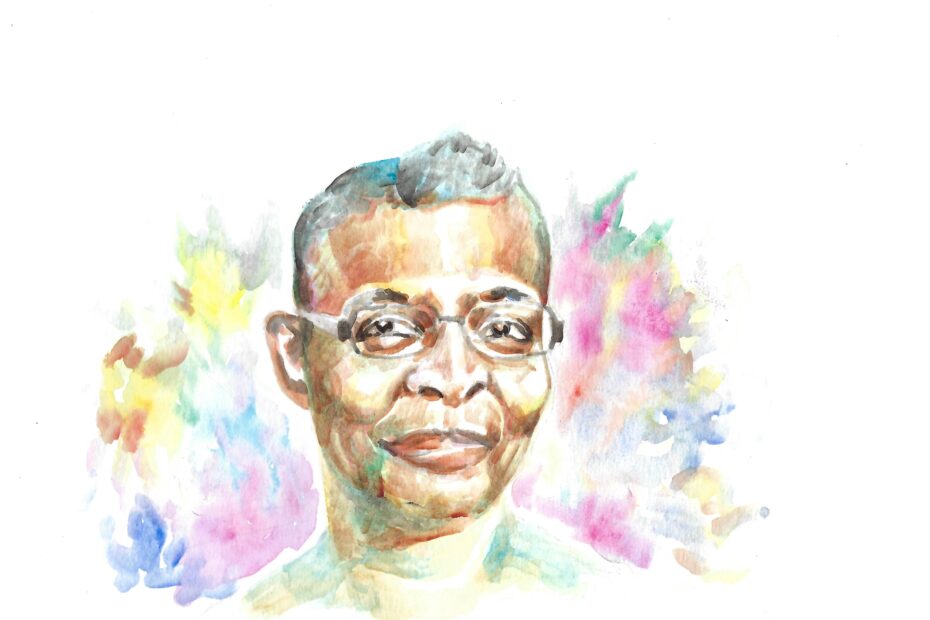This year’s Queer History Month celebrations at McGill opened on October 5 with a highly-anticipated presentation by author Nalo Hopkinson, acclaimed Jamaican-Canadian writer of speculative fiction and current professor of creative writing at the University of British Columbia. Hosted by the McGill Department of English, Creating Other Worlds was received with acclaim in the Elizabeth Wirth Music Building’s Tanna Schulich Recital Hall by students, faculty, and members of the McGill community. Hopkinson’s presentation addressed the fundamental need for marginalized creative voices to embrace alternative realities in their art and expression, as well as queer representation in academic and literary spaces.
Hopkinson has been a long-time author of speculative and science fiction, writing steadily since the 1980s. Her first few novels centred on nuanced Black and queer characters, in contrast to the white male saviour protagonists which then dominated the emerging sci-fi scene. Her novel Brown Girl in the Ring (1998) revolutionized the genre with its captivating construction, oriented around Black female heroine Ti-Jeanne and featuring powerful Obeah – African seer – characters.
Hopkinson built a considerable body of work over the decades, attracting publishers and critics with her bold literary voice and unapologetic authenticity. In 2021, she became the youngest person to receive the Damon Knight Memorial Grand Master Award from the Science Fiction Writers of America. Earlier in 2019, she was entrusted with the task of writing a comic for DC’s Sandman series — based on Neil Gaiman’s graphic novel series of the same name — by none other than Gaiman himself. “I wanted Nalo to do it”, said Gaiman to Entertainment Weekly, “because there isn’t anybody better.”
Hopkinson carved a characterful presence on the Tanna Schulich stage with her sparkling blouse and wire-frame glasses. She began with a simple request for the audience: to listen to a simple line of prose and pay attention to the physiological responses it produced. This approach to diction brings narratives to life by applying the sensations evoked by her words straight “to the nerve endings.” Readers are meant to be able to experience them with the same immersion as they would the real world.
To Hopkinson, an empathetic experience of any narrative must also be possible as a “bodily” sensation. A single word, for her, can change the energy of an entire phrase. She examined the immediate effect evoked by the sentence “the horse cantered down the street” compared to if it had “walked”; then “cantered”, compared to “galloped”, brought yet another layer of vivid feeling to the description.
Early critics of Hopkinson’s work were eager to dismiss her surreal inspirations as “escapism.” Along with other writers from queer and ethnically diverse backgrounds at the end of the last century, Hopkinson’s fiction ran into a literary community which saw her work as inherently superficial. The label of “escapist” literature, however, did little to diminish the value of her writing to those who connected with her stories. Certain people understood her speculative fiction as a channel of relief from an inflexible world that many would “want to escape.”
One of the enduring social factors in Hopkinson’s writing is her deep commitment to understanding the historical wounds carved by colonialism on the Canadian West Coast, affecting First Nations, South American and African people alike. Drawing from her Jamaican background and experiences, she persistently connects threads from the present to the looming past, exploring parallels through the worlds she writes into being. For her, storytelling is instrumental to preserving cultural vitality – as long as its stories are being circulated, a culture will maintain its “refusal to disappear.”
Having cultivated an interest in sci-fi before her academic career, it was no wonder that Hopkinson found herself drawn to speculative fiction later on. The genre’s allure of bending the rules of our universe and creating “experimental worlds” appealed to her with its limitless possibilities. She saw the opportunity to write what she hoped would be “fiction that had it all.”
A recent upwelling of support for speculative and genre fiction in academic literary circles, due to the undeniable influence of authors like Octavia Butler, Samuel Delaney, and now Nalo Hopkinson, has led to an uptick in the number of university courses and resources dedicated to these genres. In her speculative fiction classes at UBC, Hopkinson has found that her students are also showing an increasing propensity toward incorporating queer themes and characters in their writing. She takes heart in their interpretations of representation that promise to be true to life for queer people in the real world, and makes the heartening prediction that the emerging generation of speculative fiction writers will finally have what it takes to “completely change publishing” in the genre.

